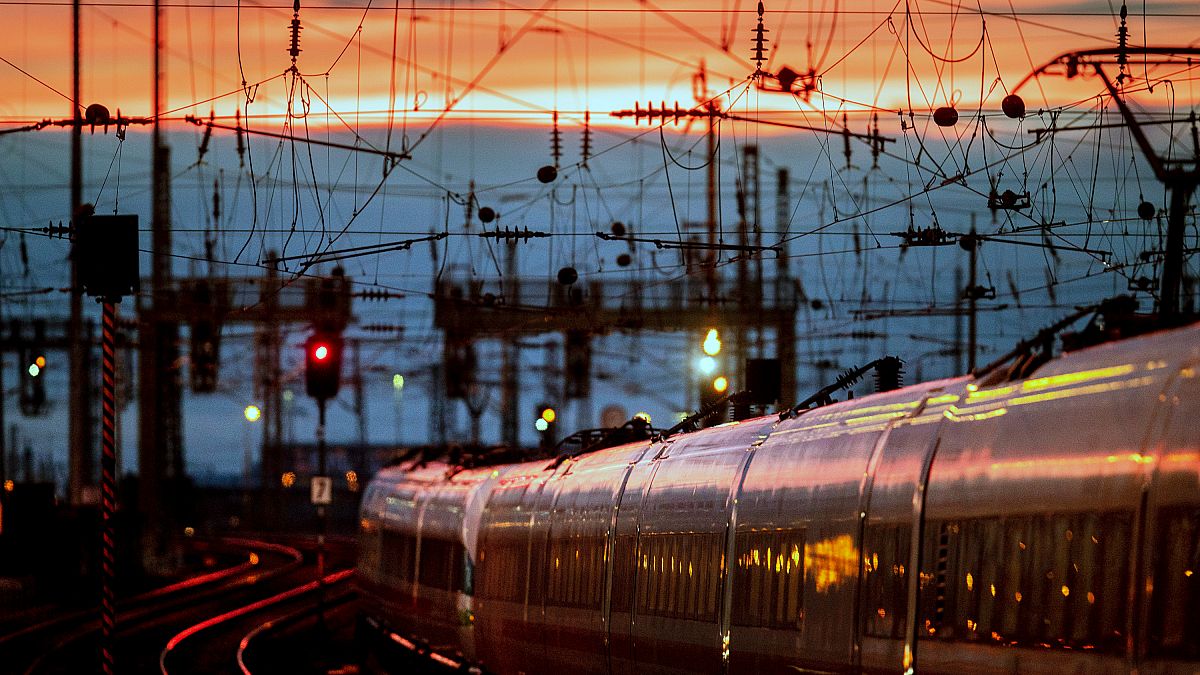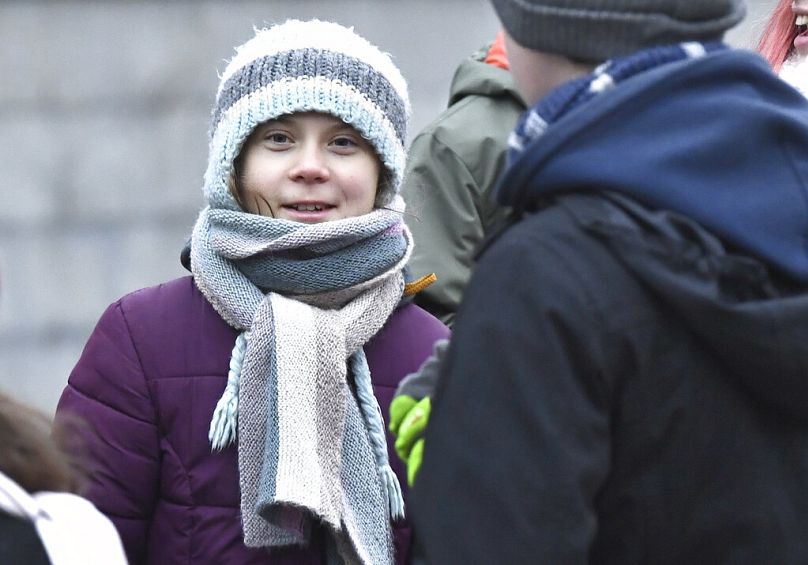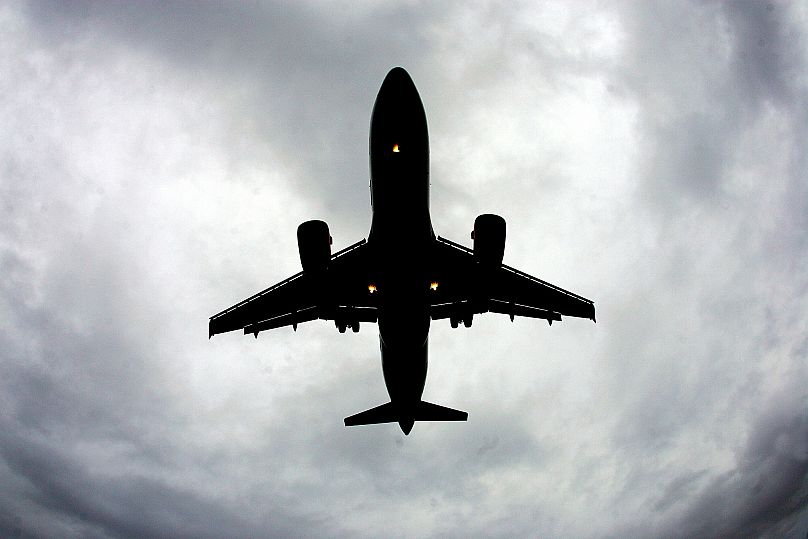With airport passengers dropping in Sweden and Germany and a new Vienna-Brussels overnight train starting on Sunday, are Europe's night trains set for a renaissance?
Three years ago many of western Europe’s iconic night trains were chugging to a halt, derailed by budget airlines and increased costs.
But now, with a climate-conscious generation taking things into its own hands, there are glimmers of a renaissance.
On Sunday (January 19), a new night service will begin linking the Austrian capital Vienna with the heart of the European project, Brussels.
It’s the latest piece in the expanding night network of Austrian state rail firm ÖBB, who took something of a gamble in 2016.
Bernhard Rieder, a spokesman for ÖBB, told Euronews the company decided to continue with its night trains at a time when services across western Europe were being shunted into sidings.
It is a risk that is paying off, Rieder claims. He said passenger numbers were up 10% last year and has put the increase down to climate-conscious travellers.
“When we talk to people we really get the feedback that people now think more about which means of transport they are using,” said Rieder.
“These days you can really fly from every point in Europe to another one, but they are now checking if there are alternatives.
“When there are alternatives, people are using them. For us, the most important thing is to bring this offer to the people.”
While this is just one train firm, there are signs of a trend emerging in other corners of Europe.
In Sweden, home of teenage activist Greta Thunberg and the flight-shaming movement, airport passenger numbers were down last year for the first time in a decade. There is a similar trend in Germany.
There is no evidence that this decrease is solely down to people feeling guilty about flying, but experts say it’s played a part.
The government in Stockholm is also looking at how to encourage more night train services and is looking at Malmo-to-Cologne as one of the first destinations.
Why were night trains cut in the first place?
Back On Track, a movement aimed at boosting pan-European rail services, says much of it is down to EU legislation.
Brussels said the same company could not own rail infrastructure like the tracks and operate the trains, in a bid to end rail monopolies and encourage competition.
The move allowed rail infrastructure firms to charge for access to its track. For instance, a train running to Paris would have to pay fees to owners of the French track.
But critics say it has discouraged night trains, which provide a low-carbon alternative to taking a short flight within the EU.
How?
Back On Track says before the legislation, if a company operated the trains and owned the track, putting on a night service didn’t cost anything extra. But with the introduction of track access charges, it became more costly.
Deutsche Bahn cut its overnight services in Germany in 2016, while in France 60% were stopped in the decade to 2019.
There were domestic night trains in only 11 EU countries, a 2017 report found, with more services in central and eastern Europe.
“The economics of a sleeper [train] are more difficult, and they're the ones that get pushed over the edge now that trains get charged track access,” Mark Smith, the man behind train booking and advice portal The Man In Seat Sixty-One, told Euronews.
“When the industry was vertically integrated, and the same operator owned the track and ran the trains, then you knew perfectly well that the track was there anyway, whether they run the sleeper train or not.
“So effectively, they were running the sleeper train at zero cost as far as infrastructure was concerned, because there is no saving if they stopped running the train. These days every train has to be charged hefty track access fees, including sleepers.”
What impact is ‘flight-shaming’ having?
The influence of Thunberg and the take-off of flight shaming has been linked to a fall in the number of people using airports in Sweden.
Earlier this month Swedavia, which operates 10 of the country's busiest airports, revealed a 4% fall in passengers last year, compared with 2018. International travellers fell by 2% but those taking domestic flights by 9%.
“If the term ‘flight-shaming’ (‘flygskam’) hadn't been invented, would this be happening?” asked Andrew Murphy, an aviation expert at Transport and Environment.
“I think there’s still increased climate awareness and flying is the most carbon-intensive activity anyone can engage in.”
Smith, however, told Euronews the popularity of trains had not just begun with Greta. Instead, it’s been a progressive increase over a number of years.
“When I first started the site way back in 2001, if people who used it gave me a reason for wanting to go to Italy or Spain by train, they would typically say they've got a phobia of flying, or they're medically restricted from flying, or they know they particularly like train travel.
“And that changed and over the last six to eight years, people have started saying two things and it's always the two things together. They're fed up with the airport and airline experience, and they want to cut their carbon footprint.”
Is flying worse than taking the train?
Back On Track says European long-distance trains are nearly always better for the climate than the aircraft, with the difference greater if they run on electrified routes and are powered by a low-carbon energy source.
Smith’s website, seat61.com, says London to Paris by plane emits 244kg of CO2 per passenger, compared to 22kg by train.
A train from Vienna to Brussels produces 35.3kg of CO2, compared with 152.8kg by taking the plane, according to ecopassenger.org.
Despite this and the drops in passenger numbers in Sweden and Germany, European air traffic grew 4.2% in the year to November 2019, according to the International Air Transport Association (IATA).
“There have been reports of a drop in footfall at airports in Sweden and in numbers of domestic passengers in Germany,” said a spokesman for IATA.
“It is too soon to say if this is a permanent trend due to ‘flygskam’, or one that is the result of falling economic growth, changes in taxation, and other factors.
“The numbers of people who have publicly pledged not to fly is small, but we certainly accept that the 'flygskam' movement exists and it is important that we reach out to anyone concerned about aviation’s environmental record so that they are given the facts and are able to make an informed choice about their travel.
“For example, not many people know that the CO2 of a typical flight has halved since 1990.
“We are also committed to reducing aviation’s net carbon emissions to half of 2005 levels by 2050, which would be in line with the overall Paris climate agreement targets.”
What is holding Europe’s night trains back?
Campaigners have argued for fuel in aviation to be taxed in the same way it is in the railway industry. They also want to make it as easy to book a train across Europe as it is to reserve a flight.
“It's very easy to find flights from Brussels to the south of France versus getting the train,” Murphy told Euronews. “It is remarkably more expensive to do that, and that's for a whole host of reasons. Obviously, the absence of kerosene taxation plays a role.
“We'd also like to see more competition between operators. Eurostar is the only operator on the Channel Tunnel whereas if you want to fly from London to Paris, I think you do have several airlines competing on that.”
Smith said: “The travel trade is really set up to sell you flights, flights, car hire and more flights. The rail industry lives in silos and worries about its own little bit so they don't work together enough.
“And there are relatively few players trying to put it together for people who want to travel long distances by train.
“Night trains are very popular with people trying to go long distances.
“Because high-speed trains are great for two-, three- or four-hour journey times, perhaps five. But as soon as you start getting to six, seven or eight hours, that's a day gone and you really want to leave in the evening and sleep on the train. Night trains are a way that rail can compete with air over significantly longer distances than for which high-speed trains are competitive.”
Smith also called on Brussels to look at whether excessive track access charges are discouraging European operators from putting on night trains. “I think it's a market failure and I think the EU needs to be involved,” he said.
Euronews has asked the European Commission to respond to this article.


